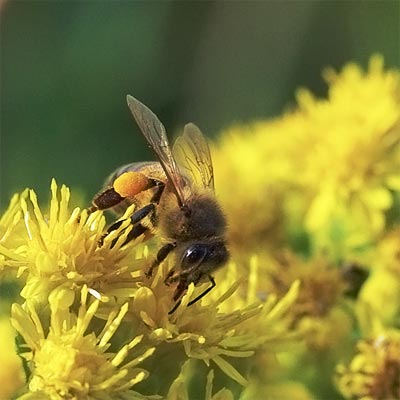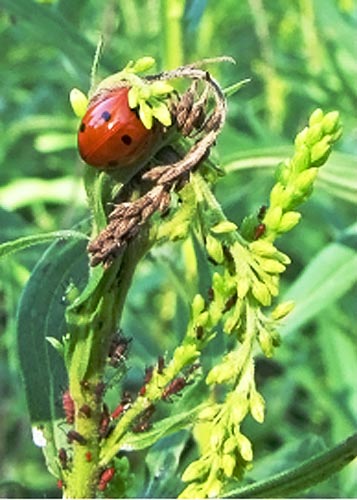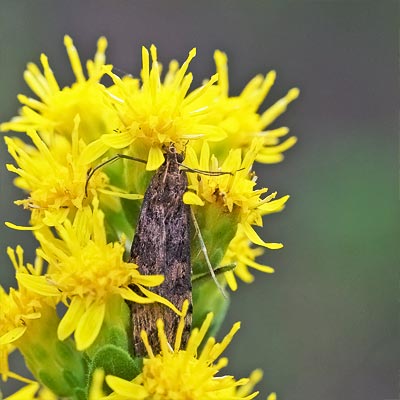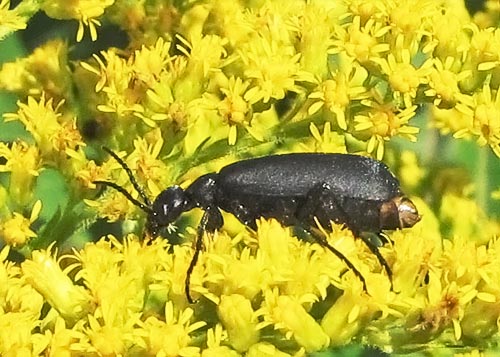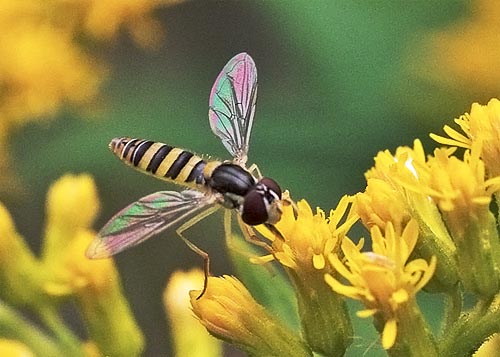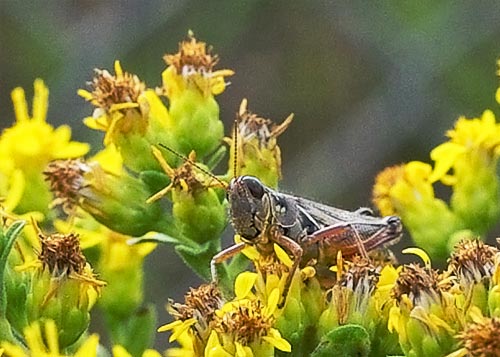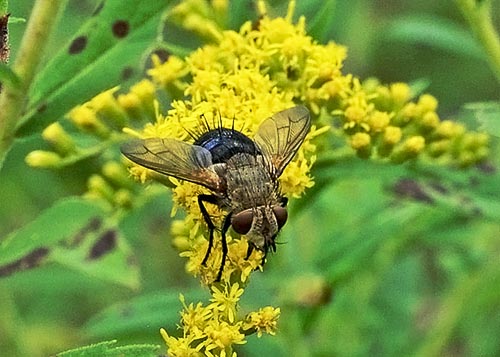Howdy, BugFans,
The BugLady’s advice for the day is: Find yourselves a big clump of goldenrod and start looking. Bring your camera. Bring a lawn chair. Bring Eaton & Kaufman’s Field Guide to Insects of North America and The Audubon Society Field Guide to North American Insects and Spiders by Lorus and Marjory Milne so you can find out what you’re looking at. Bring Donald W. Stokes’ excellent A Guide to Observing Insect Lives so you can find out what they’re doing there. You have time–one inscrutable species of goldenrod follows the next, from mid-August through the end of September (botanist Asa Gray once said that the 12 pages devoted to goldenrod taxonomy were the most boring in his book). Each critter has its own story, and it is in understanding the small stories that we start to get a handle on the big picture.
Worried about pain? The BugLady has been photographing insects for 35 years, and she really, really gets in bugs’ faces, and she has never been bitten or stung in the process (well, except for some peripheral ants, but ants have been laying in wait for the BugLady all of her life).
Worried about allergies? The pollen of goldenrod is large and is not spread through the air, but its showy flowers take the rap for the very airborne pollen produced by inconspicuous, green ragweed flowers.
What will you see?
[metaslider id=5608]
[metaslider id=5406]
[metaslider id=5407]
They’re all there, and more. Pollinators and predators. The drama of life and death playing out hundreds of times against the buttery backdrop of goldenrod, whose Ojibwe name means “sun medicine.”
Carpe diem,
The BugLady
